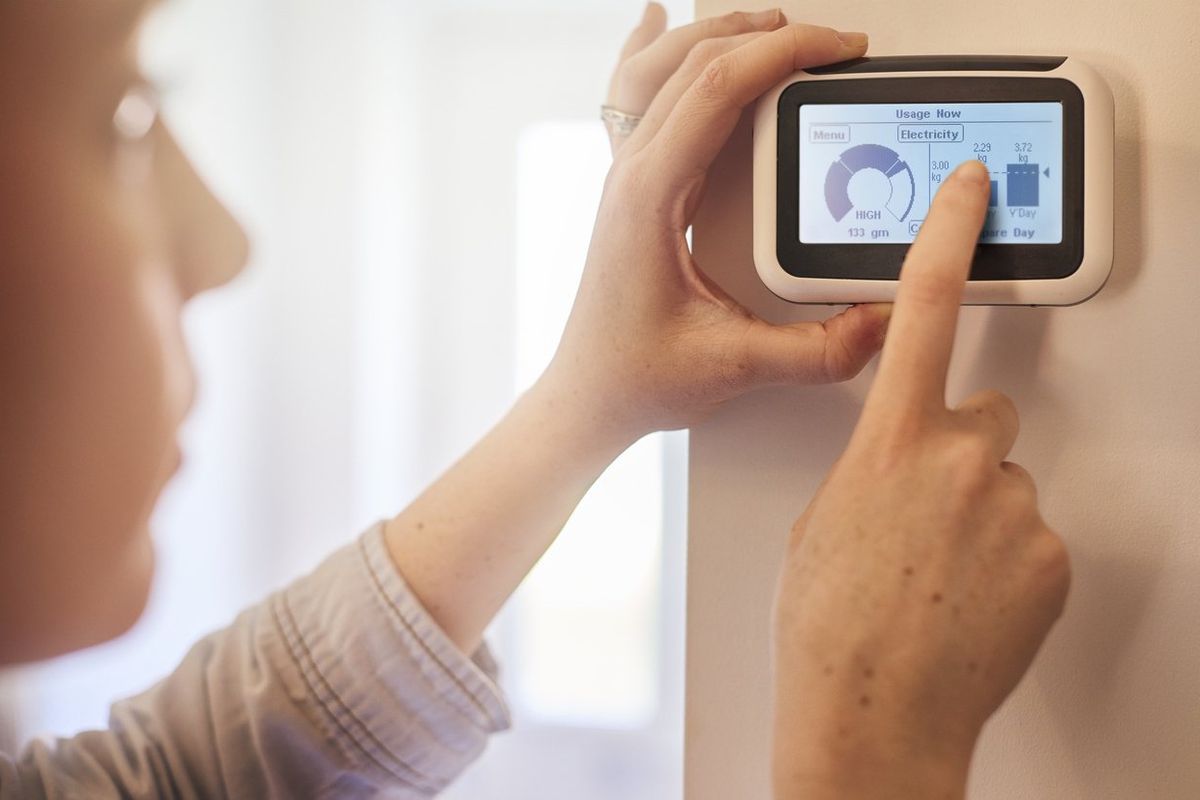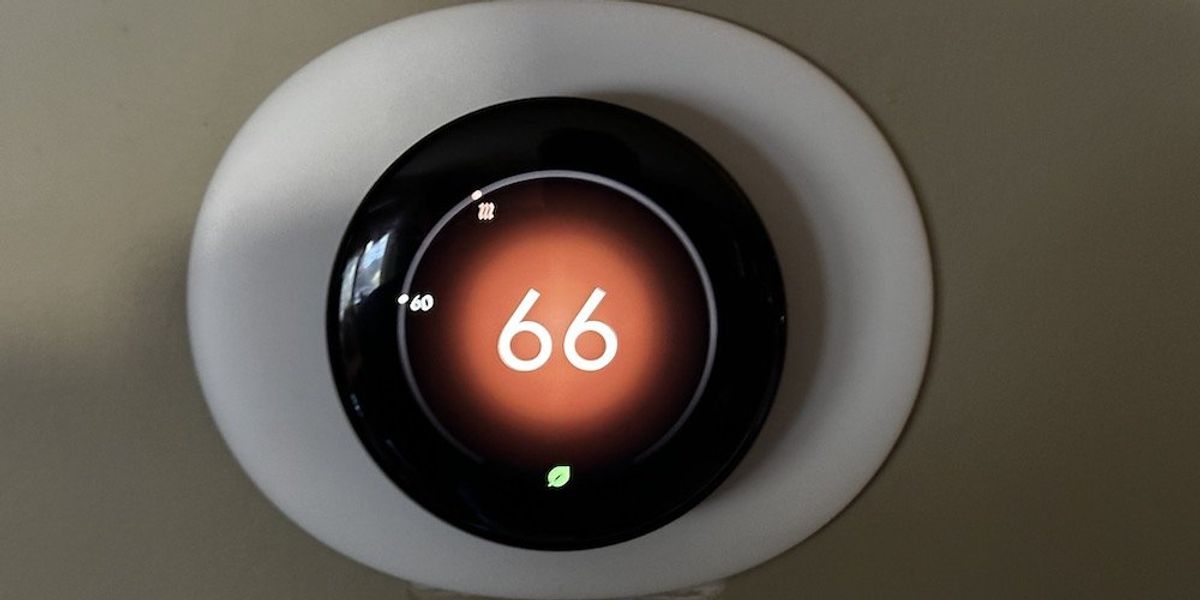Alternative Energy

iStock
Smarter Energy at Home: How Consumers Are Taking Control with Smart Home Tech
Smart thermostats, solar panels, and industry standards like HCA's are transforming how consumers manage home energy and cut costs.

Smart thermostats, solar panels, and industry standards like HCA's are transforming how consumers manage home energy and cut costs.
In an era of rising energy costs, growing electrification, and increasing demand on the power grid, consumers are seeking smarter ways to manage energy use at home. From smart thermostats to solar storage, homeowners are combining behavior shifts with cutting-edge smart home technologies to reduce consumption, lower bills, and support sustainability goals. At the heart of this movement is a growing ecosystem of products, platforms, and partnerships aiming to simplify and automate home energy management.
GearBrain has long covered the smart home space and frequently sources Parks Associates' research for our reporting, including this article. Parks’ recent findings and the expert insights shared at CES 2025’s CONNECTIONS™ Summit — specifically during the "Demand for Energy Management at Home" session — reveal how the convergence of technology, utility innovation, and consumer behavior is reshaping the energy landscape.
The smart home market is no longer just about convenience; it's rapidly becoming a key tool in managing the evolving energy ecosystem. As Michael Siemann, PhD, and Distinguished Engineer at Resideo, noted during CES 2025, the rise of EVs, data centers, and electrified appliances is putting tremendous strain on the grid. Simply asking consumers to reduce their energy use manually isn’t realistic—automation and coordination are critical.
Parks Associates research confirms this urgency. Their studies show that over 40% of U.S. broadband households now consider their electricity bill a concern, and more than 60% are interested in tools that help monitor and reduce energy use. In addition to utilizing these tools, remember to compare electricity rates side-by-side. Consumers increasingly want solutions that blend intelligence, convenience, and cost-savings, and smart home technologies are rising to meet this demand.

One of the most widely adopted smart energy devices is the smart thermostat. Parks Associates data shows a steady increase in adoption, especially among households planning renovations or moves in the next 6 months. These devices reduce energy consumption by learning user preferences and automatically adjusting heating and cooling schedules. Some models even participate in demand response programs, which allow utilities to tweak thermostat settings during peak hours in exchange for incentives.

Plug-level monitoring and automation are also trending. Smart plugs and lighting systems (like motion-sensor lights or app-controlled dimmers) enable consumers to control electricity usage by room or time of day. The result is reduced standby power and more targeted electricity usage.

Tools like Sense, Shelly EM, or Schneider Electric’s Wiser Energy platform give consumers real-time insights into which appliances are consuming the most power. As Wolfgang Kirsch, CEO of Shelly Group, pointed out at CES, many consumers start with just two smart devices and expand from there annually. Monitoring is often the first step in behavior change.
Solar and battery storage solutions are gaining traction, with Parks Associates noting rising familiarity and purchase intention across U.S. households. These systems help homeowners reduce reliance on the grid and store power for peak times. They're especially appealing for EV owners looking to optimize when and how they charge their vehicles.

While smart tech automates savings, energy-efficient upgrades form the foundation of effective home energy management. Parks Associates research reveals that more than 30% of homeowners who started renovations in the past 12 months cited energy efficiency as a top reason.
Key upgrades include:
These investments not only cut energy use but often increase home value, creating long-term financial incentives for consumers.
Utilities play a major role in accelerating adoption. Demand response programs, where users opt in to allow utilities to adjust their devices during peak periods, are gaining traction—especially when paired with financial incentives or app-based controls.
Meghan McConomy, Senior Director at NRG Energy, noted at CES that their success came from making programs simple and easy to understand. Time-of-use rates, for instance, encourage users to shift usage to cheaper, off-peak hours—often facilitated by smart devices that automate this behavior.
Yet, Parks Associates reports that barriers remain. Many households cite a lack of information or time as key reasons they haven’t taken more steps. Better education and user-friendly platforms will be crucial to overcoming these challenges.

Another exciting development in smart home energy management is the work of the Home Connectivity Alliance (HCA). For those unfamiliar, HCA is a coalition of 17 renowned global brands working to improve interoperability across long-life home products, such as smart appliances, HVAC systems, and TVs.
At CES 2023, the group introduced the HCA Interface Specification 1.0, a new industry standard for cloud-to-cloud (C2C) interoperability. This standard will allow manufacturers to offer consumers more seamless control across multiple brands and device types.
But the real game-changer came at CES 2024, where HCA unveiled its Energy Management Specification 1.0. This new specification is designed to unlock real-world energy and cost savings by enabling appliances and devices like washing machines, dryers, HVAC systems, and other high-consumption appliances to share critical energy usage data.
The goal? Empower users, support utilities and aggregators, and drive energy efficiency at scale. HCA’s model allows for secure data sharing, encouraging smarter scheduling, optimized load shifting, and more coordinated energy usage across the home. As Poonam Narang from Schneider Electric emphasized, we need collaborative industry action to truly accelerate the energy transition—and HCA is leading the way for long-life connected devices.
The future is about integration and intelligence. Consumers are increasingly interested in platforms that manage multiple devices and aggregate energy usage data from across their homes. According to Parks, households with multiple smart devices are significantly more interested in centralized energy optimization apps—especially when these are provided by trusted utilities or tech brands.
Poonam Narang of Schneider Electric emphasized the industry’s responsibility to accelerate the energy transition by developing scalable solutions that deliver clear value to consumers. “At the end of the day, it’s about reducing the energy bill,” she said.
If you're looking to better manage your home’s energy use, here’s where to start:
It’s often the highest-impact device with immediate ROI, and many utility programs offer rebates.
Automate on/off schedules and reduce phantom load from idle electronics.
Use an energy monitor to learn which appliances are draining power. Knowledge is the first step toward action.
When replacing devices, choose models with the ENERGY STAR label.
If you're a homeowner, adding solar panels and a home battery can offer long-term savings and grid independence.
Participating in demand response or time-of-use pricing plans can lead to significant savings with minimal effort.
As the smart home ecosystem continues to evolve, so too does its role in energy management. What was once a niche category for tech enthusiasts is now a critical component of how we manage consumption, reduce costs, and prepare for the energy demands of the future.
I recommend you keep an eye on companies like Duke Energy, Schneider Electric, Shelly Group, NRG Energy, Resideo—and organizations like the Home Connectivity Alliance. I am seeing real momentum toward smarter, cleaner, and more efficient homes and these companies are at the forefront.
And with support from utilities, manufacturers, and industry coalitions—and fueled by research from groups like Parks Associates—the path forward is clear to me: energy efficiency in the home must be intelligent, interoperable, and impactful.
Check out The GearBrain, our smart home compatibility find engine, to find the smart devices compatible with your existing smart home system or ones that work with Google Assistant and Amazon Alexa-enabled devices.
GearBrain Compatibility Find Engine
A pioneering recommendation platform where you can research,
discover, buy, and learn how to connect and optimize smart devices.
Join our community! Ask and answer questions about smart devices and save yours in My Gear.
